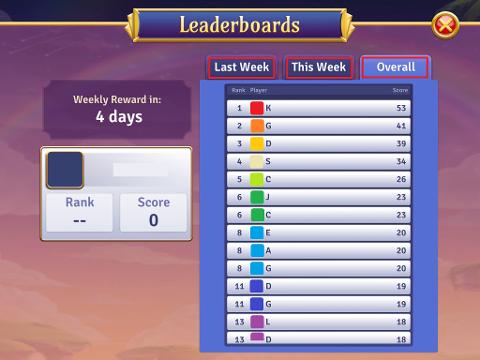Poker Levels
Most beginning poker players consider their cards first. After all, it doesn’t take long to realize that starting with a big pocket pair such as Aces or Kings – or even big connected cards such as A-K or K-Q – is a lot better than being dealt absolutely horrid hands like 7-2 unsuited, 9-6, and so on.
Level Points Gold tokens; 1: 1: 5: 2: 10: 5: 3: 25: 5: 4: 50: 5: 5: 100: 5: 6: 125: 10: 7: 150: 10: 8: 175: 10: 9: 300: 15: 10: 200: 10: 11: 225: 15: 12: 250: 15: 13: 275: 20: 14: 300: 20: 15: 325: 20: 16: 350: 20: 17: 375: 25: 18: 400: 25: 19: 500: 30: 20: 150: 10: 21: 175: 10: 22: 200: 10: 23: 225: 15: 24: 250: 15: 25: 275: 20: 26: 300: 20: 27: 325: 20: 28: 350: 20: 29: 500: 30: 30: 250: 15: 31: 275: 20: 32: 300: 20: 33: 325: 20: 34: 350: 20: 35: 375: 25: 36: 400: 25: 37: 425: 25: 38: 450. Poker: Players earn 100 reward points for every USD $1 paid in rake in Zoom or cash games or other tournament fees. And you will be moved to a lower Chest level. If you are at level 2 or higher and your progress bar expires when over 50% filled, you will receive a Chest from your new, lower level.
Then there are other poker players, who may not appear to be much different at first glance, that are likely to be playing very differently, especially if they are skilled players. While beginners are considering their own cards and not much else, skilful poker players are thinking on at least two and probably three levels. It’s impossible to succeed at hold’em poker if you don’t.
A beginning player will be looking at the cards he’s been dealt and say to himself, “A pair of Aces … sweet,” but more than likely it’ll be something like, “I’ve been dealt … another essentially worthless hand. I’ll have to toss it away.” That’s an example of playing a card-dependent strategy. This is what most beginning players do – they raise with big hands and fold the weak ones, but there’s more to consider before making a decision.
Ignition Poker Levels
If on the other hand you’re playing against a skilled opponent, he is thinking not only of his own hand, he’s also thinking about what you were dealt. That’s called second-level thinking. And if he’s also thinking about what you think he has – that’s called third-level thinking – and making his decisions based on all of these assessments.

The Different Levels of Thinking
In order to get beyond the cards you need to be thinking about your opponents and the situation you’re presented with. Here are the basic levels of thinking:
- 1st Level – What cards do I have?
- 2nd Level – What do my opponents have?
- 3rd Level – What do they think I have?
- 4th Level – What do they think I think they have?
- 5th Level – Yes, you can keep going and going…..
Theoretically we could keep going to deeper levels of thinking, but you’re only going to find a very limited percentage of players who are capable of thinking this deeply – and if they are, they’re probably over thinking the situation anyway.
While getting to deeper and deeper levels of thinking does mark a more mature stage of poker skill, the best players recognize if their opponents are even capable of thinking that deeply.
Adjusting Your Strategy
What separates the good players from the great is their ability to recognize what level their opponent is thinking on and adjusting their strategy accordingly.
If I know, for example, that my opponent only thinks about his own cards and will raise before the flop with J-J, Q-Q, K-K, A-A as well as A-K, A-Q and K-Q suited, I can fold if I have a hand that doesn’t slot into the top half of his probable holdings, and I can bet or raise anytime he checks with a weaker hand. If he checks all his weak hands and folds when I bet, I have a big advantage. If he calls because he doesn’t want to fold his hand regardless of what I might have, I’ll simply bet my good hands for value and he’ll call off all his money with cards that don’t figure to be as strong as mine.
Even if I know my opponent is starting with a bigger pocket pair than I have, sometimes I can still play against him and gain an edge. Let’s suppose I have and he has . I can call before the flop if I know my opponent is prone to keep calling with hands like pocket Aces or Kings, just because they don’t come around that often and look so good when they do. Most of the time, I’ll have to fold on the flop because my small pair probably won’t improve.
But if the flop is my opponent will bet his Aces, figuring that I’ll fold. My edge is that by thinking about each hand on a deeper level, I know with near certainty what my opponent has, but he has no idea about my hand. If my opponent is playing his pair of Aces for their intrinsic value, and doing so without a single thought about what I might have, I might be able to take all his chips – and that’s the objective of no-limit hold’em.
Third Level Play
If first level play is the elementary process of considering the strength of your hand, and your hand only, and second level involves thinking about what your opponent might be holding, third level play involves making a determination about what your opponent thinks you have in your hand. Most poker players talk this talk but far fewer walk the walk.
If your opponent is reading you as you’re reading him, and you can take whatever steps are needed to plant a seed in his mind that you have a very different hand than whatever it is you’re really holding, you can simply play off the way your opponent reads you, and the actual hand you have is of little importance.
For instance, if you can convince your opponent that you have a huge hand, you can bet or raise, secure in the knowledge that he will fold because you know that your opponent has convinced himself that you have a huge hand.

If you’re able to convince him that you are horribly weak but really have a very big hand, you can play off of your opponent’s read of you and allow him to do the betting until the time is right for you to put the hammer down and take all of his chips. That’s third level play, and very few of us do it as well as we’d like to.
Thinking Takes Time
There’s a lot to grasp here, and if you’re a beginning player you don’t need to absorb all of it in one fell swoop. It’ll take time. But from the get-go, if you realize that your opponent is thinking about what you might be holding as well as thinking about what you figure he has in addition to playing his own cards, you’re already getting a leg up on the learning curve.
Just knowing this concept is a big plus for beginners. If all your playing decisions – do I bet, call, raise, fold, or reraise – are predicated only on the strength of your own hand, you will play predictable poker, and therefore become a target for exploitation.
Ideally you should be thinking one level deeper than your opponent. If they are only thinking about their cards, you need to be at the next level thinking about their cards – but stop there. If they aren’t capable of going to the second level to put you on a hand, you shouldn’t be trying to represent something different.
But just by thinking about it, and reviewing hands you’ve played in terms of third level thinking, your game will improve by leaps and bounds.
Related Lessons
By Lou Krieger
The author of many best-selling poker books, including “Hold’em Excellence” and “Poker for Dummies”. A true ambassador of the game and one of poker’s greatest ever teachers.
Related Lessons
Earlier today Robert Woolley mentioned Tommy Angelo’s excellent book Elements of Poker. That got me thinking of one of the first poker books that I remember reading, No Limit Hold’em: Theory and Practice by the brilliant David Sklansky and the equally adept Ed Miller.
The book as a whole is very good, but there is one section that I remember vividly, the chapter on multiple-level thinking.
According to Sklansky and Miller, there are six levels to a poker player’s thinking, which confusingly starts at Level 0. This lowly level is reserved for complete amateurs — or perhaps someone who is blind drunk — and basically says “I know nothing about poker!” We’d love to play against Level 0 thinkers all day long, wouldn’t we?
Meanwhile, Level 1 is the base level of thinking for poker players and basically consists of knowing what your hand is. Again, like Level 0, this level of thinking is extremely basic and thinking like this will result in losses against the vast majority of players a Level 1 thinker encounters.
A large section of poker players fall into the Level 2 category, which finds the player asking the question “What does my opponent have?” At this level of thinking, players are aware of what their own hand beats and start to give thought to what their opponent’s hand strength is. The majority at this level are still losing players, but at least they are progressing the right way up the multiple-level thinking ladder.
Once you hit Level 3, things start to become a little complicated (although some may say more interesting). If you are a Level 3 thinker, whenever you’re involved in a hand you will be wondering to yourself, “What does my opponent think I have?” and trying to play your hand based on how your hand strength is perceived by your opponents.
Level 3 players are generally more situationally aware and will often bluff in optimal spots rather than marginal ones, thanks to being able also to project a range of hands onto those around them. The slight difference from a Level 2 thinker to a Level 3 can often be the difference of being a losing player to a winning one.

Zynga Poker Levels

Now before we continue, I have to ask if you are sitting down because this is where matters really start to become tricky. To reach Level 4 you need to be asking yourself, “What does my opponent think that I think he has?” It sounds complicated, and it is, and even if you are thinking on this level it is unlikely any of your opponents are anyway!
Level 5 is reserved only for the elite thinkers in the game and will be almost useless for us mere mortals, but for completeness’ sake I will let you know what is involved in Level 5 thinking. Have you ever played a hand and thought to yourself, “What does my opponent think that I think he thinks I have?” No? I thought not! Seems ridiculous, doesn’t it? Yet there will be some battles taking place right now where players are thinking on that high level, on another plane than the rest of us.
The key to success is to figure out what level of thinking your opponents are on and then come up with a strategy to combat them that they will understand. There is little point in adopting an approach that only a Level 4 thinker will understand if you are trying to apply it to players who only care that they have a pair of fours in their hand and about nothing else.
Thinking one, possibly two in some cases, levels above your opponent should give you a substantial edge against them — just don’t overcomplicate matters and out “level” yourself!
Photo © BrokenSphere / Wikimedia Commons (adapted), Creative CommonsAttribution-Share Alike 3.0 Unported
Poker Levels
Get all the latest PokerNews updates on your social media outlets. Follow us on Twitter and find us on both Facebook and Google+!
Poker Skill Test
Tags
cash game strategytournament strategyTommy AngeloDavid SklanskyEd Millerpoker booksRelated Players
David SklanskyEd Miller